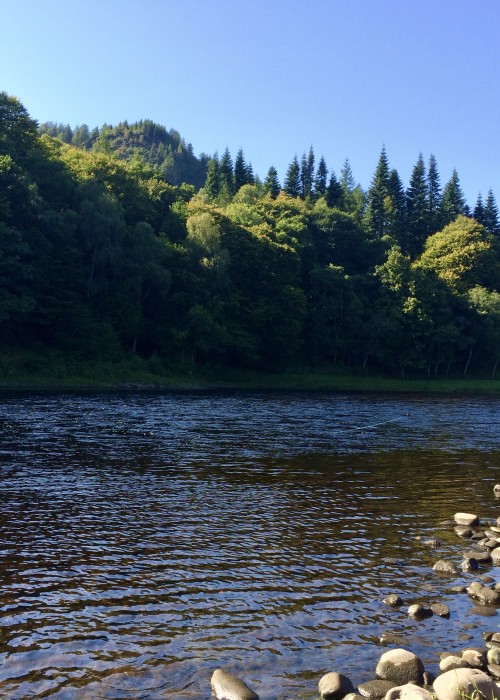
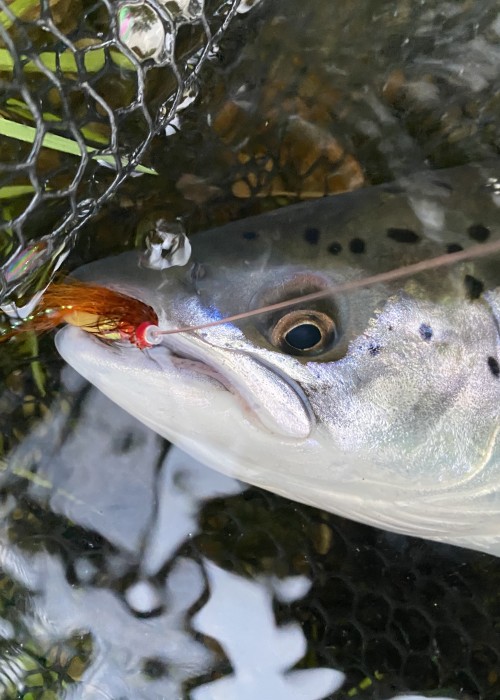
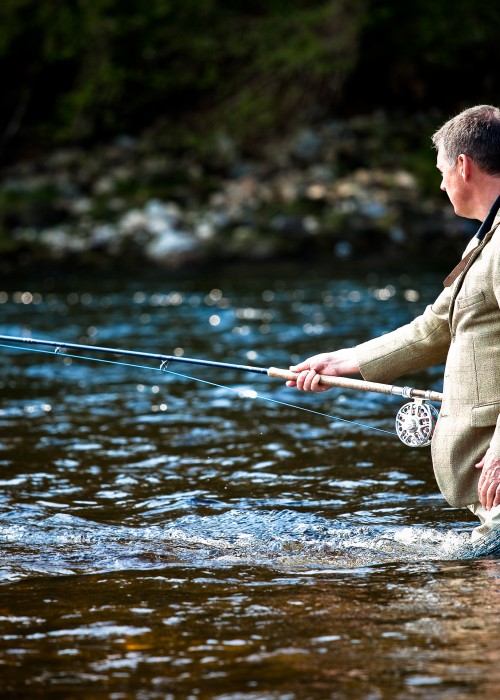
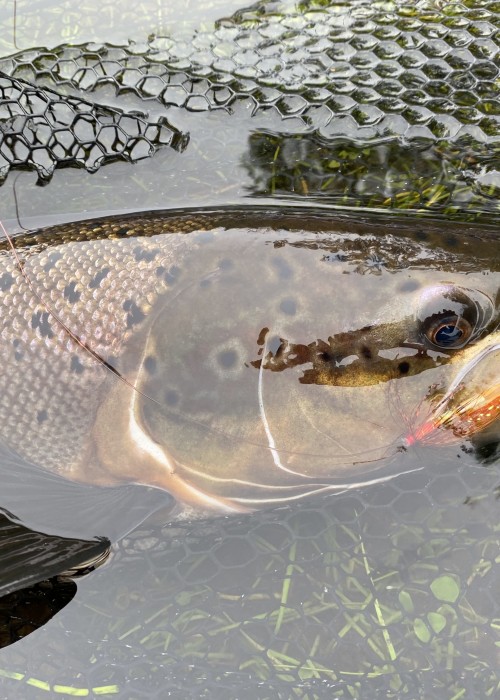
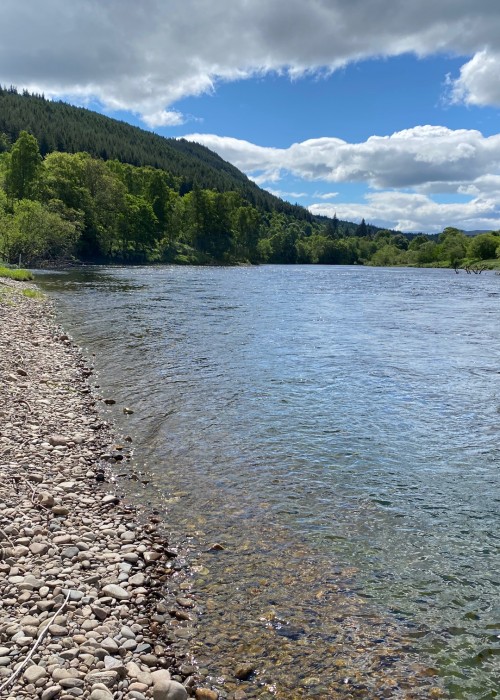
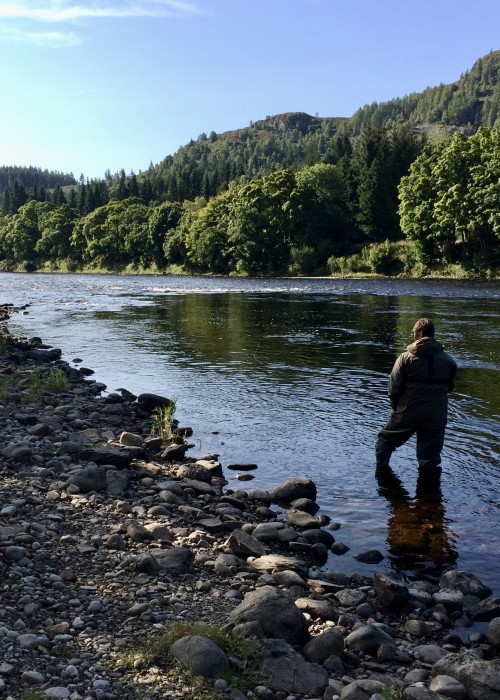
Professional Scottish salmon fishing advice on targeting the correct depth of salmon fly to match the water conditions of the salmon river.
This is an interesting salmon fishing topic that's often questioned by new and sometimes more experienced salmon anglers but I'd like to commence by stating the fact that salmon (like most marine predators) hunt from below which means a salmon may well on ocassion come several feet up from the depth of a pool to take a fly if it is in the right frame of mind to do so.
The above fact can often give the wrong information to the angler who's fishing a floating line with a light added sink tip through a deep salmon pool as that angler will more than likely be completely unaware how far the fish has come up to intercept the fly. A fish that's going to come up off the bottom of a deep river pool will likely be a fresh run salmon that's not long arrived in the pool or a resident salmon that's fully alert and exciteable. More often than not older resident salmon require a deep fishing approach in warmer water conditions in order to force a reaction so an angler who's caught a few salmon fishing their fly high up in the water column could well be missing fish by not going deeper more often.
I would advise that in the warmer water conditions of late Spring & Summer your fly should be fished down deep as that's where the cooler salmon 'holding water' will be found. To do that you really need to be prepared with some proper long braided core tapered tungsten coated sink tips to counteract the jacking up effect of the river on your main fly line. I'm not referring here to mono cored polyleaders as a real braided core sinking tip is a completely different piece of kit. The type of braided core sinking tips I'd be fishing with on the River Tay to present my fly down deep would be 15ft in length and of type 7ips (inch per second), 10ips or 15ips sinking weights.
In the very cold water condition of early Spring salmon hold much higher in the water column so there's no need to fish your fly too deep during early Spring. A 15ft type 3ips would be my weapon of choice fished at the front end of a floating Spey line or Shooting head although I prefer the Spey line profile as controlling (slowing up) the pace of the fly at range with a longer headed Spey line is doable but not as easy to achieve with a shorter Shooting head. In the very cold water conditions of early Spring you want a slower fly that fishing a foot or two under the surface of the river (see the accompanying cold water salmon holding position video) as that's 'exactly' where you'll find early cold water Spring salmon in Scotland.
If you're not fishing the River Tay and find yourself on a shallower Scottish river try to gauge the depth of the pools you're fishing and stick to the above principles based on the time of the season and the prevailing water temperature conditions but remember if you want to really annoy salmon through warmer water conditions when most salmon will automatically seek out the deep cooler holding water on a salmon beat you need to get your fly right down in amongst them for the best chance of a favourable reaction! Book a professional salmon guide who will tune you into these above professional career experience based salmon fly fishing principles.
The most effective way to get your salmon fly down in amongst deep holding salmon is with a sinking line or with a floating line with an added sink tip section on the front end. The material compound used in sinking lines & tips is tungsten which is mixed with the PVC or polyurethane fly line that will sink at between 1.5 inches per second to 18 inches per second depending on how much tungsten is used in making each tip. Typically sink tips range in length from between 5ft to 15ft and come in various denstities and colours and keeping a full range of these sinking tips is essential if you're taking your salmon fly fishing seriously. It is possible to buy proper braided core sink tips but some line systems come with their own selection of sinking tips that are designed to balance with the mainline. Become a true salmon 'antagonist' and make sure you're swimming your fly close to the resident salmon in the pool you're fishing. This thought process & tactic will put you into the top 5% of effective salmon fiy fishers as all too often salmon fishers 'switch off' when their fly lands on the water instead of switching on!